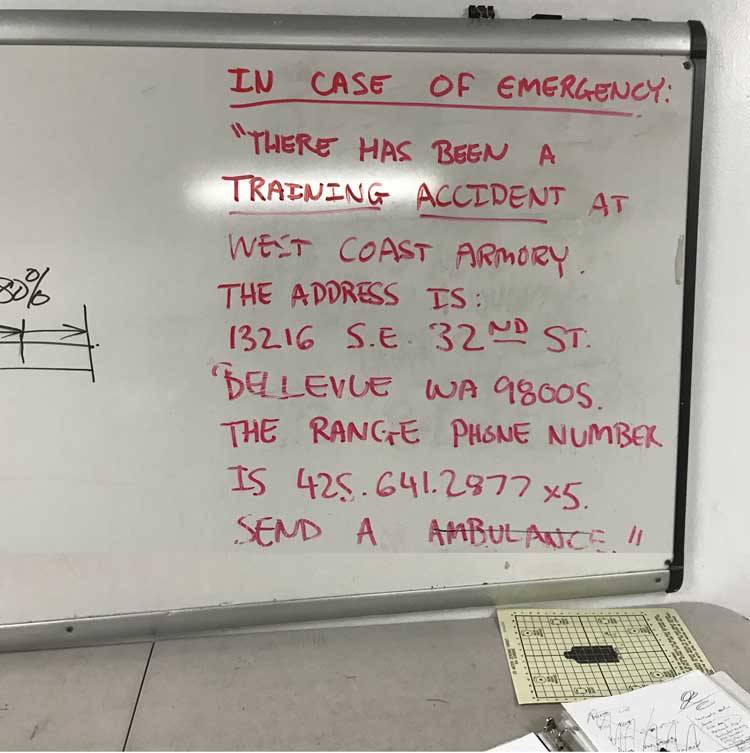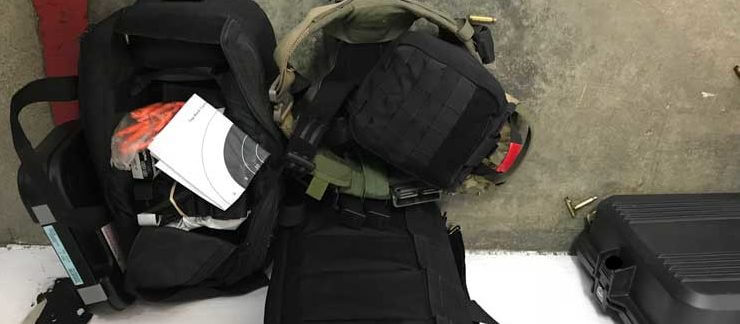
Plan for a training accident
- Posted by Mike Shertz MD/18D
- Categories (S) Security & Awareness, MARCH
🕖 Reading Time, 3 minutes
While helping teach a class with InSights Training Center at West Coast Armory Indoor Range, I was really impressed to see they posted emergency instructions in the event of a training accident if 911 must be activated.
If you are around firearms professional or personally long enough, you will see someone get shot. Negligent discharges and accidental shootings during training are rare but do occur. When a shooter negligently discharges a firearm, they are most likely to shoot themselves in their left hand and right thigh (95% of the world is right-handed). Negligently shooting yourself with a pistol tends to be more dramatic than life-threatening. Negligently shooting yourself with a rifle can traumatically amputate a limb.
It is nearly impossible to free think under stress.
The range’s posting has a number of good points:
- Reminding a 911-caller to specify it’s a training accident rather than an active shooter event will trigger more of an EMS response rather than law enforcement
- Having the address handy when most would call from a cell phone will make emergency response easier and faster.
- Having the address posted means anyone can call, not just someone who knows the address already.
Average EMS time is usually 7-8 minutes. The range has an evacuation plan, but what is your casualty management plan? Do you have appropriate medical equipment on the range or in your range bag? Is your medical equipment marked in red so rescuers can easily find it?What medical equipment are you carrying and is it the best choice? Have you been trained on how to properly use the medical equipment you’re carrying?
Dr. Mike Shertz is the Owner and Lead Instructor at Crisis Medicine. Dr. Shertz is a dual-boarded Emergency Medicine and EMS physician, having spent over 30 years gaining the experience and insight to create and provide his comprehensive, science-informed, training to better prepare everyday citizens, law enforcement, EMS, and the military to manage casualties and wounded in high-risk environments. Drawing on his prior experience as an Army Special Forces medic (18D), two decades as an armed, embedded tactical medic on a regional SWAT team, and as a Fire Service and EMS medical director.
Using a combination of current and historical events, Dr. Shertz’s lectures include relevant, illustrative photos, as well as hands-on demonstrations to demystify the how, why, when to use each emergency medical procedure you need to become a Force Multiplier for Good.




